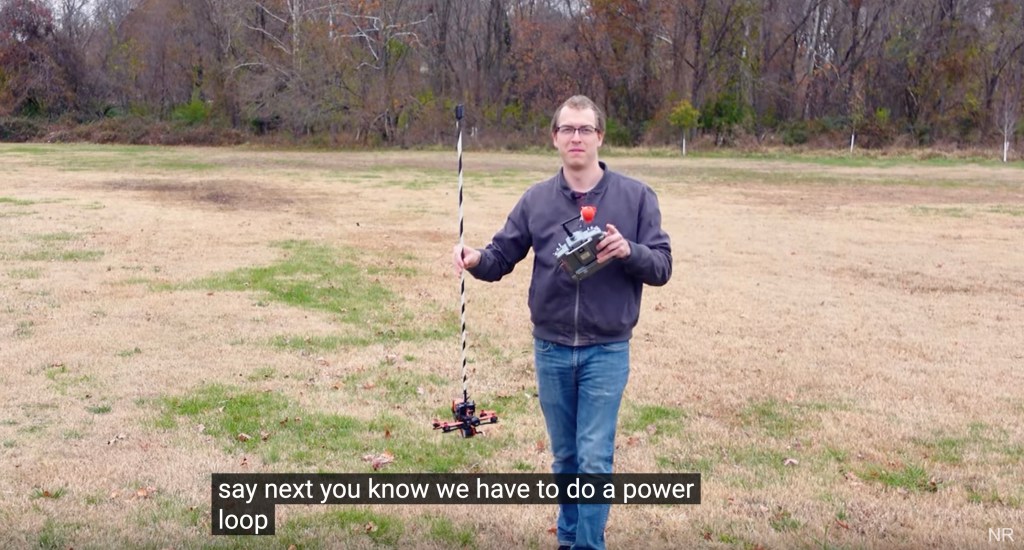
Our friend (okay: our wonky hero who lets us write about him) Nicholas Rehm has struck again. This week the John Hopkins University Applied Physics Laboratory engineer and avocational maker of extremely deep-dive tech geek (and very entertaining) drone videos has surmounted a seemingly impossible challenge: getting a UAV to fly keeping its inverted pendulum payload balanced upright.
When last we visited him, Rehm had just built a homemade UAV integrating Google maps, the kind of algorithms that make most mortals curl up into a terrorized ball, and other stuff that permitted the craft to avoid obstacles during fully autonomous flight – and without GPS or other external communication. This week he presented his tricked-out drone rigged to keep an inverted pendulum – aka a swinging rod usually carrying payload beneath it – balanced in its upward-thrusting position on the drone’s back. Think of it as teaching the vehicle to master the plate-spinning trick that seems impossible even when dexterous humans attempt it.

The project grew from Rehm’s February video in which he equipped a UAV with a cargo-trailing “sky crane” – his means of demonstrating what an astonishing engineering and physics feat it was to descend the Perseverance rover to the surface of Mars intact. His work in that film creating an active compensation system in the control unit that responded to the swinging spatial payload (which in his trials turned out to be a rock) inspired him to take the challenge one step further by seeking to adapt it to an inverted, upwardly balanced configuration.
His first step was to swap the pliable winch for a rod (even Rehm isn’t going to hack a rope to stand straight up), then rework a console joystick to act as a pivoting anchor affixed to the top of the drone. He next undertook a series of preparations that include 3D parts printing, writing more of those fetal position-inducing algorithms, and “soldering up the potentiometers to the analog inputs on my teensy flight controller” – which, he adds just in passing, was of his own custom design (“a piece of cake,” he straight-facedly insists).
After more calculations and prep work explained in what by rights should have been Greek, Rehm takes his system into the yard where – despite repeated attempts to fine-tune the controller – the drone and inverted pendulum payload immediately list over and eat lawn.
“I kinda had a feeling this wouldn’t be that easy,” Rehm remarks, getting maximum humor for his deadpan buck – then cuts away to add a separate IMU to the joystick to measure the pendulum angle independently from that of the drone. “Remember kids, don’t take shortcuts or else you’ll probably end up doing it the long way when the shortcut doesn’t work.”
After adding the IMU and shortening the pendulum stick a tad, both drone and protrusion perform something akin to an aerial Fred and Ginger number. “It’s kinda hard to fly – I need to tune it better,” says Rehm. To prove his perfectible point, the UAV and rod promptly crash into a potted plant.
Rehm next puts his refined pendulum-carrying drone to a time challenge with his manually stick-balancing friend, Peter, declaring “I know for a fact that Peter’s not better than a robot.” A mere 38 seconds later, destiny vindicates him when machine outlasts human. Victory.

But hubris (and a clear gift for showmanship) tempt Rehm to take the inevitable step too far as he declares, “We have to do a power loop!”
It probably won’t be considered a spoiler to reveal the attempt does not end well, though one suspects it was exactly the amusing closer to the film Rehm was after. Either way, that scene, the inverted pendulum video, and all of Rehm’s work is very much worth taking in for the drone skills, tech expertise, and entertainment value.
FTC: We use income earning auto affiliate links. More.



Comments